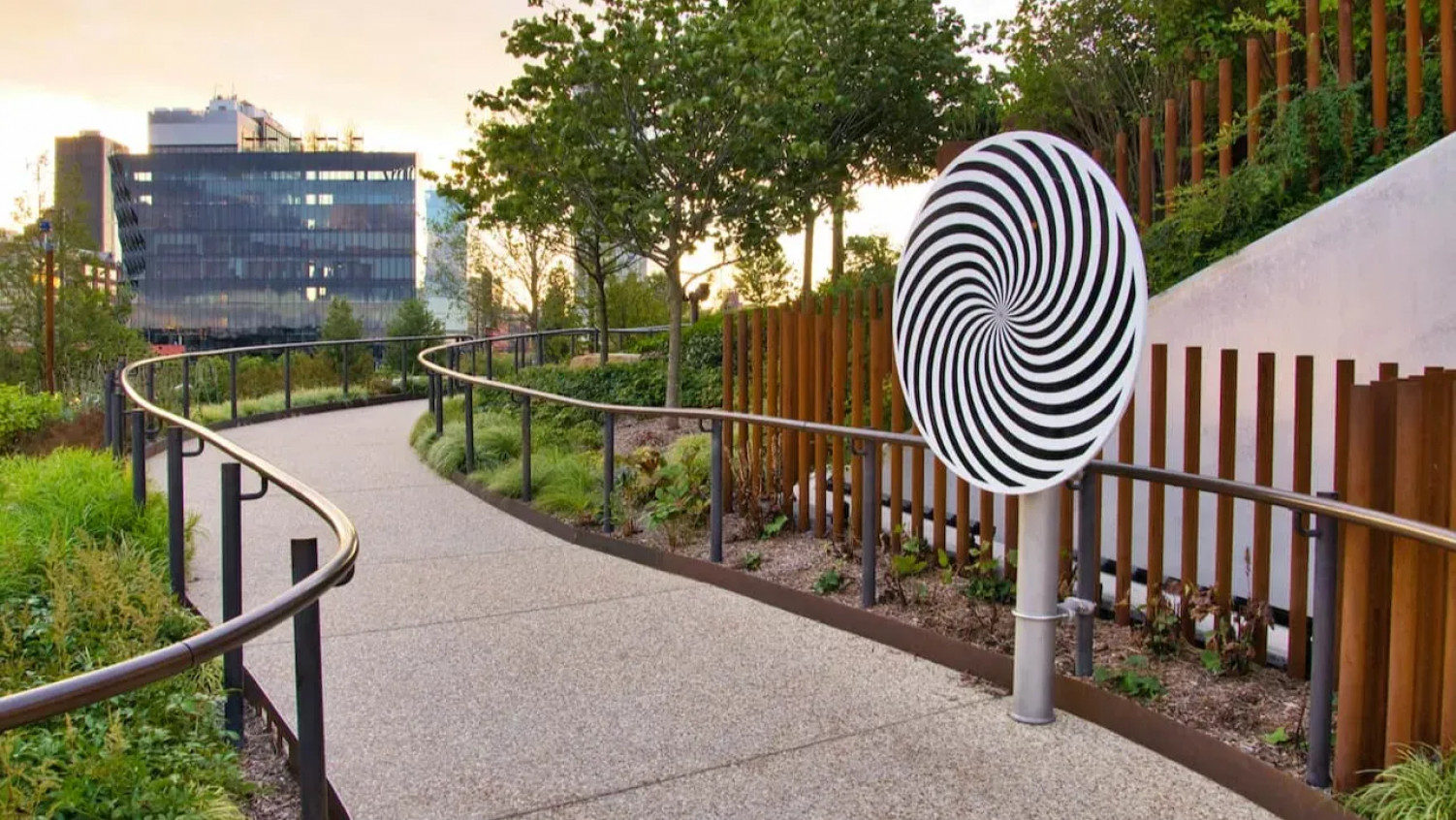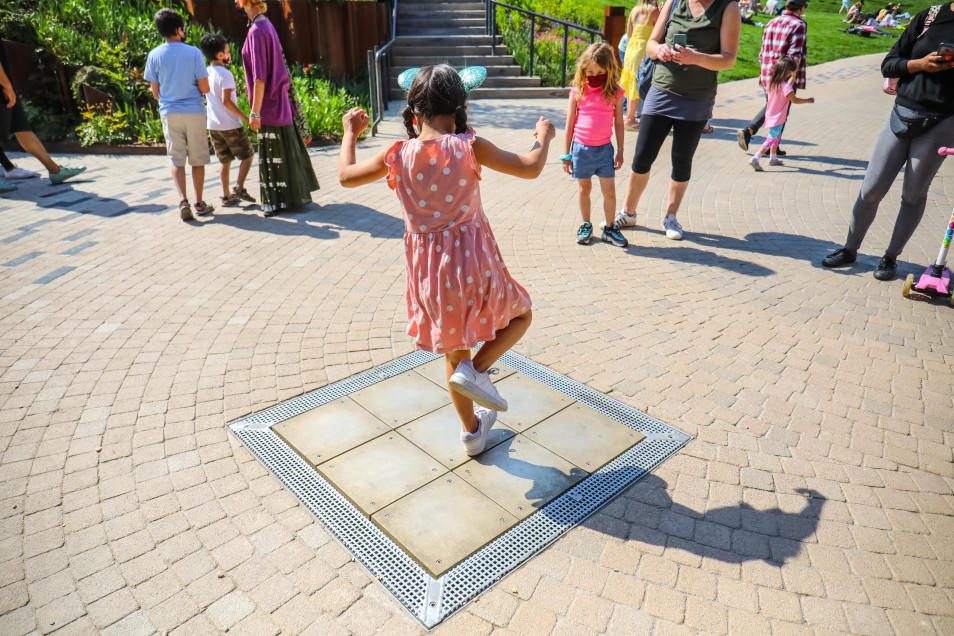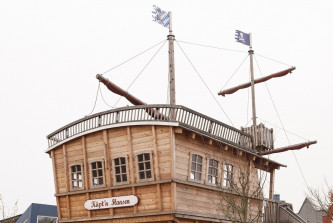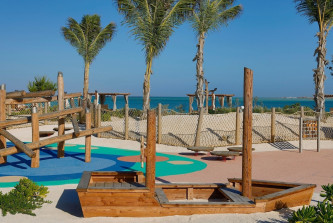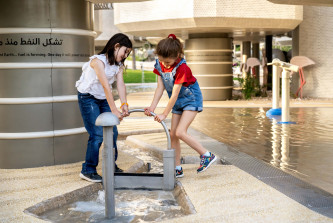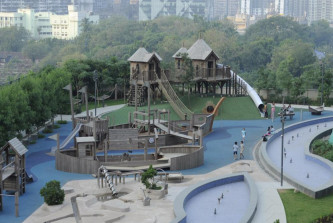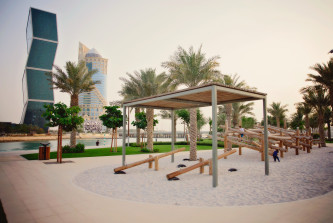Case Studies
Little Island Playground, New York – A Landmark in Sensory Play
Perched on the west side of Manhattan, Little Island has emerged as one of New York’s most distinctive public parks, blending cutting-edge design with interactive, sensory-rich play experiences. Completed in collaboration with Richter Spielgeräte, a renowned provider of high-quality playground equipment, the park demonstrates how innovative play areas can be seamlessly integrated into iconic urban spaces.
Project Overview:
Part of the larger Hudson River Park, Little Island spans 0.97 hectares and is supported by 280 concrete piles driven into the riverbed, with 132 pot-shaped structures creating a landscape that rises between 4.6 to 18.9 metres above the Hudson River. Designed by landscape architect Signe Nielsen (MNLA), the park’s lush lawns, winding pathways, and planting beds provide a tranquil yet stimulating environment.
The park’s playful heart lies in the sensory stations developed by Richter Spielgeräte, which are carefully woven throughout the landscape. These include the melodic Dance Chimes, the interactive Rotating Discs, and the tactile Instrument, all of which invite visitors to pause and engage. Not just for children, these stations appeal to people of all ages, encouraging everyone to explore the senses and interact with the environment.
Unique Features:
The equipment from Richter Spielgeräte enhances the park’s appeal by offering immersive, multi-sensory experiences. Designed with both technical excellence and user engagement in mind, the play elements provide an inviting space for tactile, auditory, and physical exploration. The Dance Chimes, for example, produce sound as users move across them, creating a collaborative experience that merges play with music. The Rotating Discs and Instrument offer their own sensory surprises, turning a simple walk through the park into a dynamic adventure.
More than just play, these installations are designed to endure the challenges of an urban park setting. With thoughtful engineering, such as the ability to roll certain pieces into secure storage at night, the park ensures that the equipment is both resilient and sustainable—an important consideration for a space visited by thousands daily.
A Destination for Play and Culture:
Little Island is more than a playground; it is a vibrant cultural destination. In addition to the sensory stations, the park features a 687-seat amphitheatre, hosting performances and events, and two food kiosks, making it a popular spot for both locals and tourists. The integration of Richter Spielgeräte’s sensory equipment adds to the park's multi-faceted appeal, offering moments of playful discovery amidst the backdrop of art, nature, and culture.
The success of Little Island’s play area showcases how well-designed playgrounds can elevate a public space, making it not only functional but also an attraction in its own right. Visitors are drawn not only to the scenic views and performances but to the unique opportunity to engage in creative and sensory play that stimulates both mind and body.
A Model for Future Play Spaces:
Little Island serves as an inspiring example of how thoughtfully crafted play areas can enhance public spaces of all kinds. Its popularity demonstrates that well-placed sensory play equipment, combined with architectural beauty, can create environments that foster both fun and learning.
The work of Richter Spielgeräte on Little Island highlights the possibilities for sensory and interactive play spaces in urban environments. As cities and communities increasingly recognise the value of accessible, high-quality playgrounds, the success of this New York landmark offers a blueprint for future projects, where play can be seamlessly integrated into public parks and community spaces.
Through the success of projects like Little Island, it's clear that sensory-rich, durable playground equipment has a powerful role to play in enriching public spaces and enhancing visitor experiences for generations to come.
